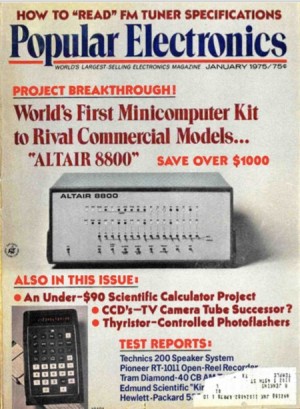 |
| Image courtesy Geeks People Like.com |
Today’s PC industry got its start with Microcomputers that were being built in garages all over the world. The DIY community actually started the microcomputer industry in the 1970s as tinkerers and small companies built small, affordable computers and laid the foundation for the IBM PC, which turned 40 on Friday, August 13th. The DIY movement thrives today, driven by makers, gamers, crypto-coin farmers, and hobbyists worldwide. Today, the average investment made for a DIY rig is $2,000 and can get as high as $10,000 for some of the more elaborate and decorative units.
The CAGR of the DIY market is 10% to 11% in North America and Europe (including the UK) and over 20% in China and is worth over $13 billion a year.
The DIY community is a vibrant, vital, and voracious group of builders, experimenters, and enthusiasts that are kin to the hot-rod builders of yesterday and today. It’s not just about LED lights; the DIY hobbyists teach the PC OEMs a thing or two about tastes, performance, and ambitions.
 |
The DIY could date its birthday to 1975 when the movement began to coalesce through gatherings of like-minded builders. Gordon French is credited with establishing the Homebrew Computer Club, a computer hobbyist group in Menlo Park. They met in French’s garage from March 1975 to December 1986. The club played an influential role in the development of the microcomputer revolution. It led to a conference in San Francisco and ultimately to Comdex.
The well-documented and praised article in the January 1975 Popular Electronics on the Altair 8800, which the magazine called a minicomputer, was also a contributor. The Altair was a kit, and it attracted people from all over the world, including a Harvard student and his pal Paul Allan. There’s a great article about the Popular Electronics magazine article by the Fast Company magazine here.
Fast Company magazine here.
Many of the people working in the computer industry today started out meeting in those clubs.
Those machines formed a base for early microcomputer builders. [Text Description automatically generated] A couple of years later, finished, productized micro-computers with 6502 processors appeared—the Commodore PET and radio Shack TR80 being among the most popular. We hacked our way into our micro-computers. We built expansion boards to increase the resolution of the screens (I converted my character-based screen into a bit map screen so I could play Adventure), we added audio and even acoustic modems.
The mass production of the IBM PC and the clones that drove down the price of memory and other parts was like a drug to us DIYers. When many DIYers moved to the PC, one of the first things we did was to replace the 4.77 MHz PC’s crystal with an 8 MHz unit—souping up our PCs. Yes sir.
Companies like Hercules made bit-mapped AIBs which we plugged into the PC and used to make big spreadsheets and play games.
At the meet-ups, you could see every imaginable and many unimaginable mods, accessories, and improvements. Gate’s DOS was taught to do things it didn’t know it could, and everyone was writing BASIC programs for dozens of different applications. The real programmers started using the new C language, which had a compiler written by Dennis Ritchie.
Today you can go to a Makers conference and still find the DIYers buying, selling, and talking about what they’ve done or are about to do. It’s just as exciting as the early days, except now it’s a real and a big business. Today DIYers light up their systems with LEDs, add physical dashboards with meters and gauges, build elaborate and artistic cabinets, and overclock. They super-cool and trick out their PCs limited only by budgets and parts availability. Of the many DIYers I’ve spoken to at Maker fairs and PC shops like Frys and Circuit City before they disappeared, the one thing they all told me when I asked why they did or would do it was, for the joy of doing it. The joy of creating something different and unique. You can see some examples here.
The DIYers fully embraced the steampunk theme, partially inspired by Bioshock.
 |
| Image courtesy: Alex Lopez |
At JPR, we’ve been tracking the DYI market forever. It’s not easy to measure, but we’ve developed some models and tested them with a few clients and think we have a pretty good picture of where the market is, what it’s, and where it’s headed. If you’re interested in the market, give us a call or send me an email. Jon@jonpeddie.com
In the meantime, I’ll be tricking up one of my PCs. Oh, and speaking of that, my colleague Ted Pollak has made his PC look like an airplane cockpit; if you’re into sims, get in touch with him. ted@jonpeddie.com.